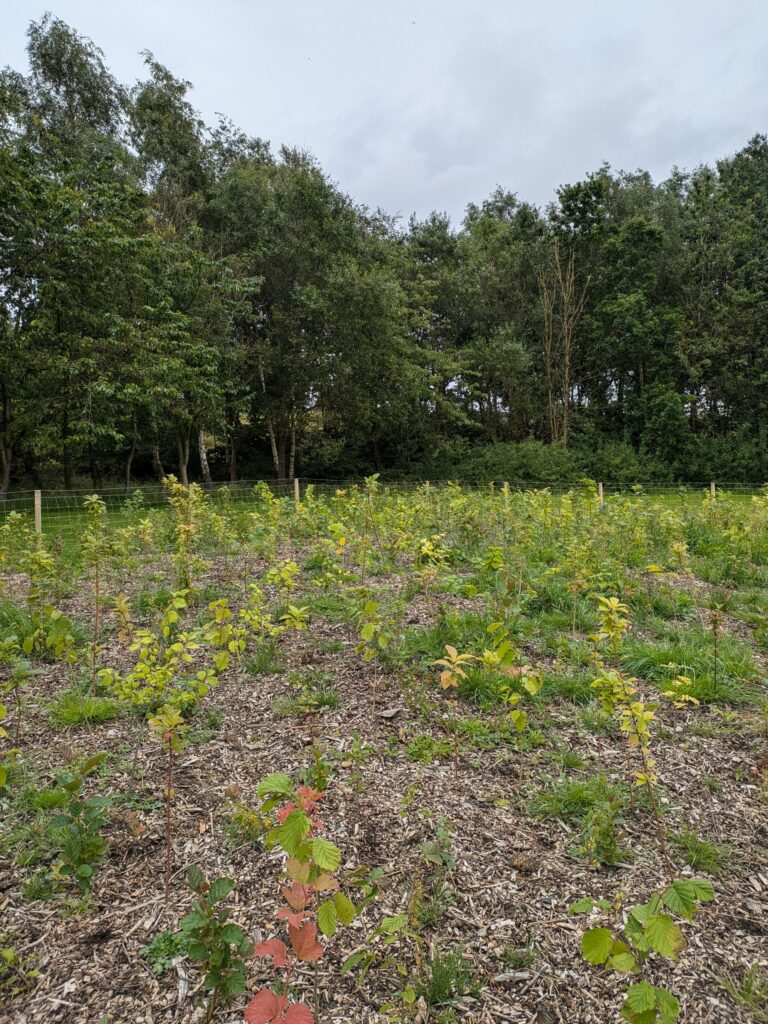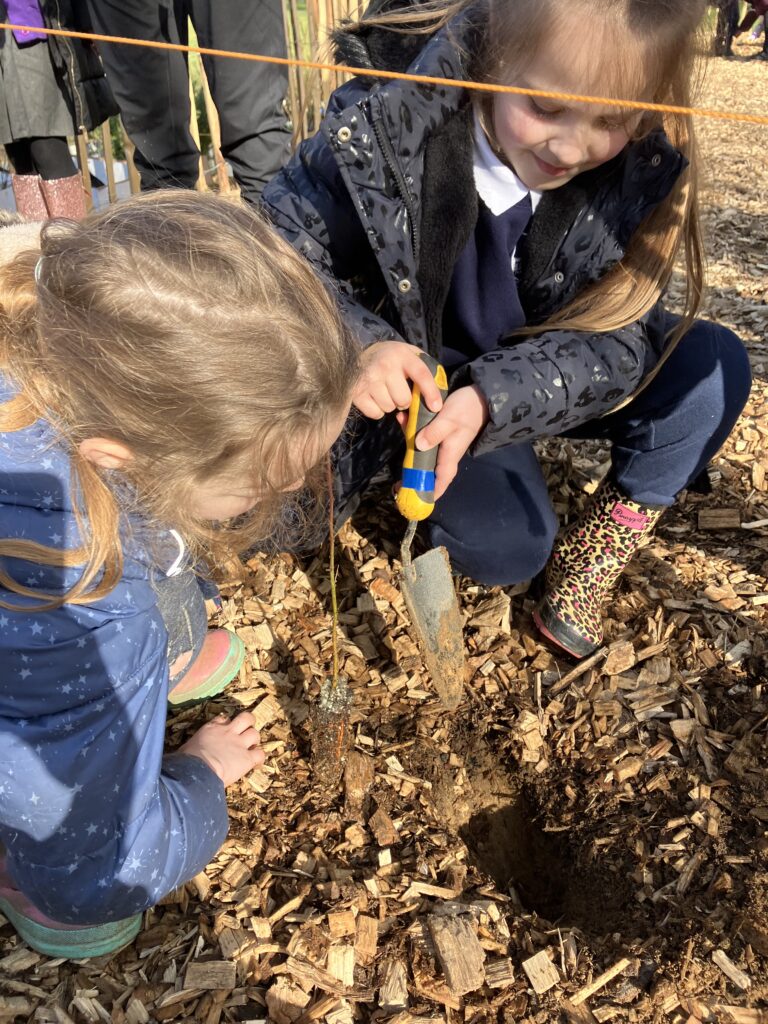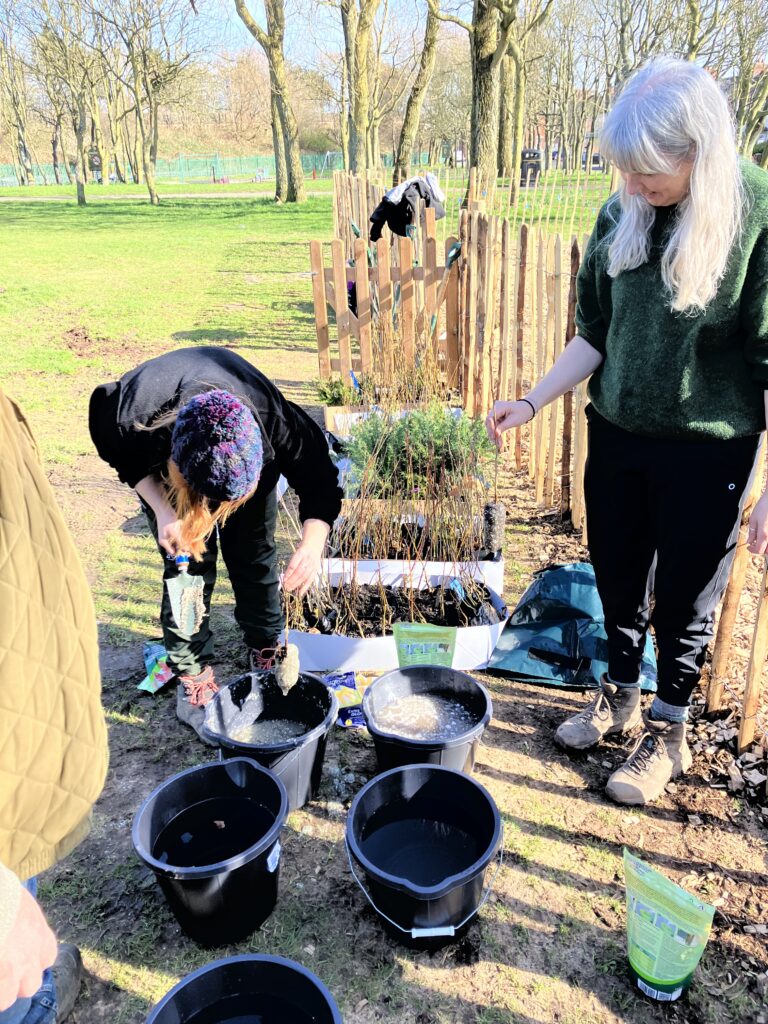Micro-woods
What is a Micro-wood?
Also known as a Miyawaki forest, a Micro-wood is a small area that has been dug and planted with many the elements found in a mature forest or woodland – rich soil, native fungi, beneficial shrub plants, smaller trees, and large towering trees. This unique type of forest was first pioneered by Japanese botanist Dr. Akira Miyawaki. The method to create micro-woods has been built upon over the years and research has shown that Micro-woods grow at faster rates than other traditionally planted forests and woodlands. This means they can provide shelter and food to wildlife faster. They also absorb air pollution and lock away carbon quicker, which helps reduce the impacts of climate change.
How to make one?
The process isn’t complex, but it does require volunteers and specialist machinery, like diggers. The method involves digging down into the ground to 1 metre depth. The soil that has been removed from the hole is mixed with compost, fungal spores, and any other soil improver that might be needed (e.g., straw – to improve gas movement in the soil). This mix is then placed back into the hole and covered in mulch, like bark chipping or straw.
After this, volunteers will spend around half a day planting, in a random mix, over 850 plants. The random mix is to mimic natural forests. Each meter squared will be planted with a minimum of four plants. Planting at very high concentrations in Micro-woods helps quickly create a supportive environment for the plants – this may even differ from the environment surrounding the micro-wood and is called a micro-climate. This micro-climate is another thing that will help more plants survive in the Micro-wood as it may be moister helping the plants survive better during dry spells.
Micro-woods are usually enclosed behind a fence and gate. However, the gates are never locked as the fence is to discourage dogs and accidental trampling. Some Micro-woods have paths, and they are perfect places for bio-blitzes. So next time you see one, take a step inside and see how much wildlife life you can find!
Why are Micro-woods needed?
Micro-woods grow at faster rates than other traditionally planted forests and woodlands. This means they can provide shelter and food to wildlife faster. They also absorb air pollution and lock away carbon quicker, which helps reduce the impacts of climate change.



